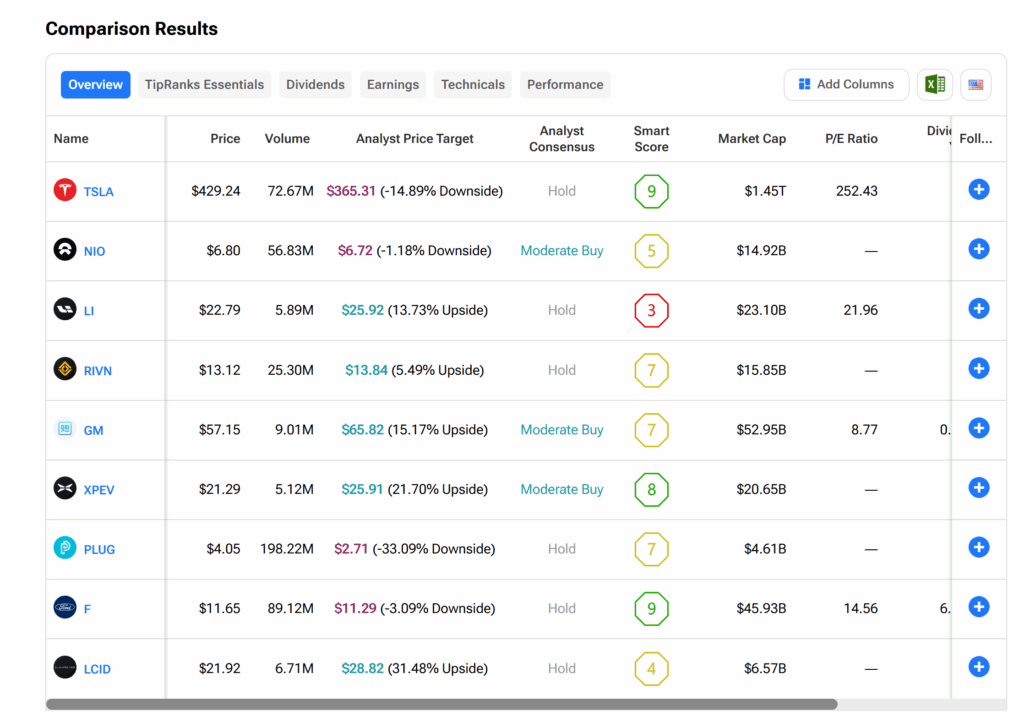Purchases of battery-powered and plug-in hybrid vehicles across the world climbed to a monthly all-time high of 2.1 million units in September—a 26% surge from the same period last year. This is according to data from research firm Rho Motion.
Elevate Your Investing Strategy:
- Take advantage of TipRanks Premium at 50% off! Unlock powerful investing tools, advanced data, and expert analyst insights to help you invest with confidence.
The surge came as demand spiked in China and many U.S. buyers rushed to take advantage of a $7,500 federal tax credit for EVs that were phased out at the end of September.
China dominated the global sales, accounting for approximately 62% of the purchases, which comes down to 1.3 million units sold. This was followed by Europe where over 400,000 units were sold, representing a 36% rise. North America comes next with 215,000 units that is a 66% increase. The rest of the world pulled in over 153,000 units, jumping 48%.
Automakers Face Reality Check
The sales expansion in North America in September comes as automakers such as General Motors (GM) and Stellantis (STLA) recently reported quarterly rises in their U.S. sales, fueled by the Trump administration’s axing of the EV tax credit.
However, as the credit has expired, EV sales are expected to plunge over the coming months. Already, General Motors has positioned itself for a $1.6 billion write-down on its EV production capacity, as the legacy automaker’s outlook for EV adoption turns sullen.
It is important to note that the rollback of EV tax credit is only one prong in the Trump administration’s anti-climate campaign. The government is also looking to repeal vehicle emission standards and depenalize automobile manufacturers that do not meet federal fuel economy standards.
EV Retreat Sends Ripples Beyond the U.S.
Meanwhile, these trends appear to be having a ripple effect across the world, particularly in the West. For instance, earlier in the year, UK Prime Minister Keir Starmer eased certain constraints on its zero-emission vehicle mandate. In early September, Canadian Prime Minister Mark Carney also suspended the nation’s policy that aimed for 20% of new cars to be zero-emission by 2026.
Both moves came in the face of economic strain from U.S. tariffs and lobbying from the auto industries. Carney stressed the importance of backing local manufacturers over enforcing strict quotas.
Likewise, facing automaker pressure, the European Commission recently decided to reassess its 2035 zero-emission vehicle objective a year ahead of schedule. Stakeholders had raised concerns about the feasibility of the plan, pointing to sluggish EV uptake, infrastructure shortcomings, and heightened global competition.
What are the Best EV Stocks to Buy?
Despite the global pressure on EV production and sales, they remain an important part of the auto industry. Therefore, determining the best EV stocks remains essential for investors. The TipRanks Stock Comparison tool provides direction on which EV stocks can make for a good investment, based on Wall Street analysts’ estimations. Kindly refer to the graphics below.

















